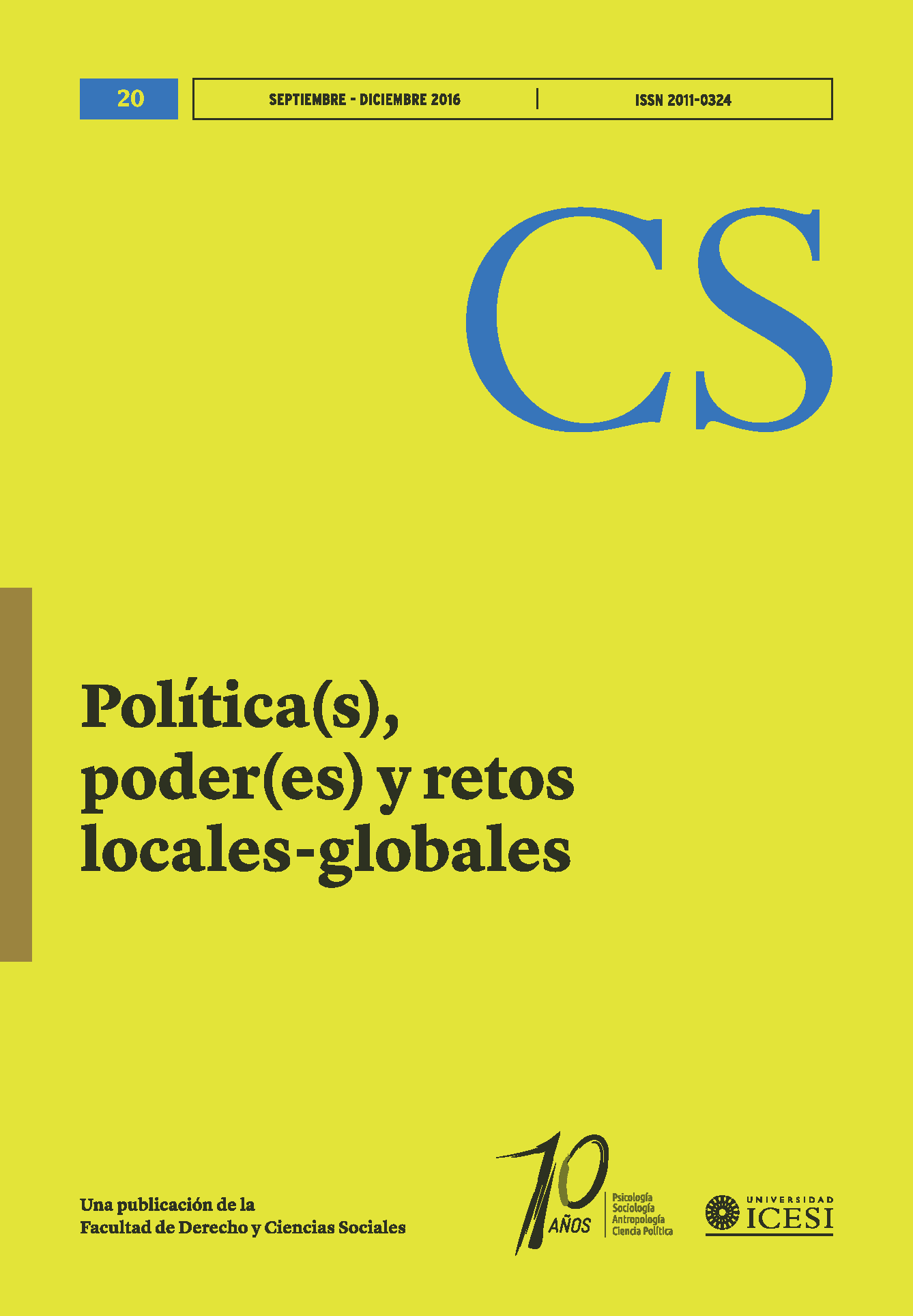Vulnerabilidade e práticas de informação: experiências de migrantes latinos (não documentados) nos Estados Unidos
DOI:
https://doi.org/10.18046/recs.i20.2211Palavras-chave:
Migrantes latinos, Não documentados, Práticas de informação, Comportamentos de informação, Fotografia participativaResumo
Este artigo explora as práticas de informação (pesquisa, uso e distribuição da informação) dos migrantes latinos, particularmente aqueles que estão em situação irregular na fronteira EUA-México, e em Seattle, Washington. Neste contexto geram-se práticas de informação diferentes. Na fronteira encontramos mais práticas de pobreza de informação tipo “pequeno mundo”, as quais são ampliadas e consolidadas em quanto o sentimento de pertença se reforça após passar mais tempo estabelecidos nos EUA. Porém, a vulnerabilidade e transitoriedade permanecem, perante o risco constante de deportação. Os resultados do estudo em comunidades colombianas são apresentados em outro artigo complementário na próxima edição desta revista. Através da fotografia participativa e entrevistas não estruturadas, exploramos as experiências e práticas de informação de comunidades marginalizadas e as relacionamos com o jeito em que vivenciam a transitoriedade ao longo das diferentes fases da experiência de migração. Também discutimos como as etapas de migração podem não ser suficientes para explicar as constantes mudanças e iterações sobre as experiências dos migrantes estudados.Downloads
Referências
Baron, L. F., Neils, M., & Gomez, R. (2013). Crossing new borders: computers, mobile phones, transportation and English language among Hispanic day laborers in Seattle. Journal of the American Society for Information Science and Technology (JASIST), 64(5).
Blakeley, K. (2015, September 27). Mark Zuckerberg wants to bring Facebook to migrants. Daily Mail.
Bronsam, G. (n.d.). Norway is using Facebook to send a stark message to migrants. BBC News. Retrieved from http://www.bbc.com/news/magazine-34813650
Caidi, N., Allard, D., & Quirke, L. (2010). Information practices of immigrants. Annual Review of Information Science and Technology, 44(1), 491–531.
Carter, M., & Grover, V. (2015). Me, My Self, and I (T): Conceptualizing Information Technology Identity and its Implications. MIS Quarterly, 39(4).
Chatman, E. A. (1996). The Impoverished Life-World of Outsiders. Journal of the American Society for Information Science, 47, 193–206.
Chatman, E. A. (1999). A theory of life in the round. Journal of the Association for Information Science and Technology, 50(3), 207.
Chatman, E. A., & Pendleton, V. E. (1995). Knowledge gap, information-seeking and the poor. The Reference Librarian, 23(49-50), 135–145.
Chomsky, A. (2014). Undocumented: how immigration became illegal. Beacon Press.
COHA. (n.d.). Young Voices From the Border: Fear and Unaccompanied Migrant Children. Retrieved from http://www.coha.org/young-voices-from-the-border-fear-and-unaccompanied-migrant-children/
Cunningham, E. (2015, September 16). Facebook is the new travel guide for Iraqis headed to Europe - The Washington Post. The Washington Post. Retrieved from http://wpo.st/YUAb0
Ensor, J. (2015, September 20). The Facebook group helping migrants reach Europe. The Telegraph. Retrieved from http://www.telegraph.co.uk/news/worldnews/europe/croatia/11877508/The-Facebook-group-helping-migrants-reach-Europe.html
Fisher, K., Marcoux, E., Miller, L., Sanchez, A., & Ramirez Cunningham, E. (2004). Information Behavior of Migrant Hispanic Farm Workers and their Families in the Pacific Northwest. Information Research, 10. Retrieved from http://informationr.net/ir/10-1/paper199.html
Gomez, R., & Vannini, S. (2015). Fotohistorias: Participatory Photography and the Experience of Migration. Charleston, SC: CreateSpace.
Gonzalez-Barrera, A., & Krogstad, J. M. (2014, October 2). U.S. deportations of immigrants reach record high in 2013. Retrieved June 8, 2015, from http://www.pewresearch.org/fact-tank/2014/10/02/u-s-deportations-of-immigrants-reach-record-high-in-2013/
ITEP. (2013). Undocumented Immigrants’ State and Local Tax Contributions. Washington DC, USA: Institute of Taxation and Economic Policy. Retrieved from http://www.itep.org/pdf/undocumentedtaxes.pdf
Izcara Palacios, S. P. (2012). Violencia contra inmigrantes en Tamaulipas. European Review of Latin American and Caribbean Studies, 93, 3–24.
Izcara Palacios, S. P. (2016). Los Transmigrantes Centroamericanos En México. Latin American Research Review, 50(4), 49–68. https://doi.org/10.1353/lar.2015.0050
Izcara Palacios, S. P. (2016). Violencia postestructural: migrantes centroamericanos y cárteles de la droga en México. Revista de Estudios Sociales, (56), 12–25.
Izcara Palacios, S. P., & Andrade Rubio, K. L. (2015). Causas e impactos de la deportación de migrantes centroamericanos de Estados Unidos a México. Estudios Fronterizos, 16(31), 239–271.
Jensen, B. (2002). Service to day laborers: a job libraries have left undone. Ref User Serv Q Reference & User Services Quarterly, 41, 228–33.
Nail, T. (2015). The Figure of the Migrant. Stanford, California: Stanford University Press.
Newell, B. C., & Gomez, R. (2014). Informal Networks, Phones and Facebook: Information Seeking and Technology Use by Undocumented Migrants at the U.S.-Mexico Border. Proceedings of iConference 2015, Rochester, NY. Retrieved from http://papers.ssrn.com/abstract=2539396
Newell, B., Gomez, R., & Guajardo, V. (2016). Information seeking, technology use, and vulnerability among migrants at the US-Mexico border. The Information Society. Retrieved from http://www.narcis.nl/publication/RecordID/oai:tilburguniversity.edu:publications%2F0fa2fd3c-2b33-45eb-be12-69f248c53ceb
Passel, J. S., & Cohn, D. (2011). Unauthorized Immigrant Population: National and State Trends, 2010 (Pew Research Center). Pew Hispanic Center. Retrieved from http://pewhispanic.org/files/reports/133.pdf#page=25
Perryman Group. (2008). An Analysis of the Economic Impact of Undocumented Workers on Business Activity in the US with Estimated Effects by State and by Industry. Waco, Texas, USA. Retrieved from http://www.ilw.com/articles/2008,1008-perryman.pdf
Reuters. (2014, July 5). Migrantes y “polleros” utilizan Facebook para acordar el cruce de frontera. La Jornada. Mexico. Retrieved from http://www.jornada.unam.mx/ultimas/2014/08/05/migrantes-y-polleros-utilizan-redes-sociales-para-organizar-paso-por-la-frontera-7977.html
Savolainen, R. (2008). Everyday information practices: a social phenomenological perspective. Scarecrow Press.
Schiller, N. G., Basch, L., & Blanc, C. S. (1995). From immigrant to transmigrant: Theorizing transnational migration. Anthropological Quarterly, 48–63.
Vannini, S., Gomez, R., & Guajardo, V. (2016). Security and Activism: Using participatory photography to elicit perceptions of Information and Authority among Hispanic migrants in the U.S. In Proceedings of iConference 2016. Philadelphia, PA.
Yefimova, K., Neils, M., Newell, B. C., & Gomez, R. (2015). Fotohistorias: Participatory Photography as a Methodology to Elicit the Life Experiences of Migrants. In Proceedings of HICSS 48. Hawaii. Retrieved from http://papers.ssrn.com/abstract=2482520
Downloads
Publicado
Edição
Seção
Licença
Copyright (c) 2016 Ricardo Gómez

Este trabalho está licenciado sob uma licença Creative Commons Attribution-NonCommercial 4.0 International License.
© Direitos autorais reservados
O material desta publicação pode ser reproduzido sem autorização, desde que o título, o autor e a fonte institucional sejam citados.
O conteúdo publicado na Revista CS é distribuído sob a licença Creative Commons BY-NC 4.0 Attribution/Attribution-NonCommercial 4.0 International.
Você tem o direito de:
Compartilhar — copiar e redistribuir o material em qualquer suporte ou formato.
Adaptar — remixar, transformar, e criar a partir do material.
De acordo com os termos seguintes:
Atribuição — Você deve dar o crédito apropriado , prover um link para a licença e indicar se mudanças foram feitas . Você deve fazê-lo em qualquer circunstância razoável, mas de nenhuma maneira que sugira que o licenciante apoia você ou o seu uso.
NãoComercial — Você não pode usar o material para fins comerciais.











